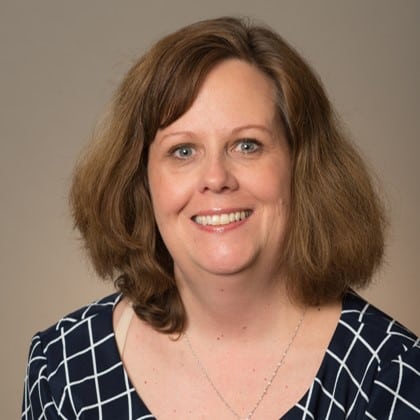By now the ripple effects of the pandemic are starting to become apparent, both in research and in our own lived experiences.
- Kids and teens were more likely to report depression, anxiety, and suicidal thoughts during the pandemic. Sometimes by as much as half or a quarter on some measures.
- The U.S. Surgeon General says we’re in a “mental health crisis”, which continues today.
- Kids and teens who were out of school and under stress from stressful home situations likely missed out on important learning opportunities and social interactions.
- The increased demand from people needing counseling or therapy during and after the pandemic far outpaced the supply of practitioners, placing additional strain on people who might have already struggled to find help prior to COVID-19.
But none of that comes as a surprise. “Before the pandemic, people had anxiety and depression, and they had access to care,” says Michelle Miller. Miller trains teams around the country on mental health care and manages mental health initiatives for the National Children’s Alliance. “What we now know is people who didn’t experience anxiety or depression are now. The pandemic has had an effect,” she says. And access to care is tighter than ever.
The lasting ripples of the pandemic likely won’t be fully understood for a generation. But there are things we can prepare for and understand about the situation today that can help kids cope and work through depression, anxiety, stress, substance abuse, and suicidal thoughts.
Access to care isn’t keeping up, but geography is less of a boundary

“I was involved in a White House briefing recently about mental health and everyone there recognizes there aren’t enough therapists,” says Miller. Reasons for this vary, including lack of therapy schools and programs, training, interest in the profession, pay, and simply not enough people choosing to become professional therapists.
“And when we looked at child advocacy centers across the country, a third say they have unmet staffing needs for mental health,” says Miller. “It’s not just a rural or urban issue, either. Urban areas may have more therapists, but they also have to serve more people.”
Prior to the pandemic, one-in-three kids who came to a CAC reported experiencing suicidal ideation or self-harm. “When we compare 2019 with 2021, we can see the rates of people experiencing suicidal thoughts and going to emergency departments, we see the rates increasing,” says Miller. She cites:
- A 31% increase in adolescents going to the ER for mental health reasons.
- Some kids and teens endure different and often more prolonged anxiety and depressive experiences.
- A stunning 51% increase in girls going to the ER for severe mental health reasons compared between winter 2019 and February and March 2021. That same study showed a 4% increase in boys.
The sharp increase in mental health issues for young women isn’t fully understood, but one theory is, at least during pandemic lockdowns, young boys might have been more comfortable playing video games or chatting online with friends, whereas girls lost critical face-to-face social interaction. But the mental health impacts of this aren’t fully understood, either.
“What we do know is everyone can use a little therapy at some point,” says Miller, and telehealth, which is often derided as a “lesser” treatment option, is proving to be incredibly effective. “In a study done by our partners at the Medical University of South Carolina, researchers found that 97% of kids who were treated with telehealth no longer meet criteria for PTSD,” says Miller. This experience is critical for children who are abused, assaulted, or witness a crime.
“The other thing that happens is kids are more likely to show up to a telehealth visit,” says Miller. Without the need to arrange transportation or shuffle work or school schedules, telehealth visits fit in more flexibly. Miller also points out a hybrid approach is equally effective because it helps people across vast distances, like across a state, or during a special circumstance like a snowstorm.
Benefits for parents, too
“We know the better moms and caregivers do, the better the kid does,” says Miller. CACs, as just one avenue for helping kids after abuse or maltreatment, have long worked to help kids with therapy and screenings. “But we’ve found when caregivers participate in therapy, their posttraumatic stress symptoms go down just by virtue of taking part with the kids,” says Miller.
Critically, most therapists treat children over the age of 14 as adults and keep discussions confidential and parental involvement is usually just “involvement”, not a dedicated treatment. Caregivers should never be afraid to seek their own dedicated treatment.
Accessing mental health care in Indiana
In Indiana, as in every state, clinicians can only provide care in the state they are licensed. In Indiana, Kentucky, Ohio, Illinois, and Michigan many therapists and clinicians near state borders cross-license. So even if you live 60 miles north of Louisville, Kentucky, providers in and around the Louisville metro area may be able to provide you with clinical visits over a video chat.
Likewise, just because you live in Indianapolis or Evansville does not mean a provider in Fort Wayne or as far away as Cincinnati, or Sturgis, Michigan—assuming they’re licensed in Indiana—couldn’t help. Check with your insurance provider or local child advocacy center for some guidance. Likewise, Indiana residents can call 211 from any phone and a navigator can search for options for you.
Interested in reading more?
Read more from our interview with Michelle Miller. “You know your kid best, but remember what kids think and feel “is an internal state””
“Parents are more aware of what’s going on with their kids today,” says Michelle Miller, “But what kids are thinking and feeling is an internal state. What parents see outwardly may be different.”

